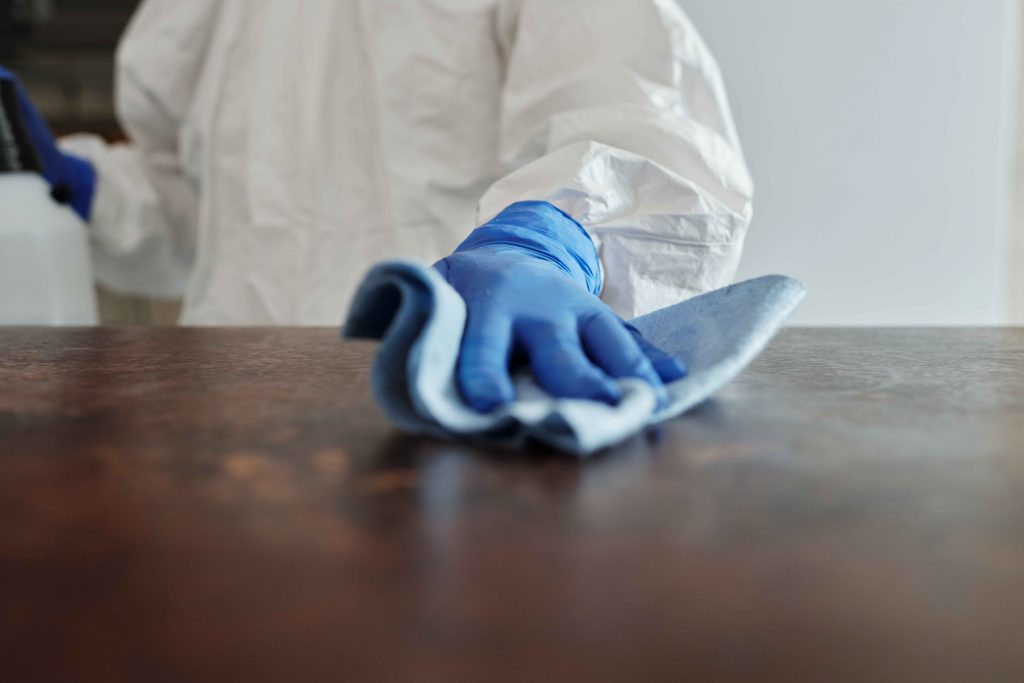Surgical Site Infection (SSI) is a type of infection resulting from a surgical procedure. Center for Disease Control (CDC) defines SSI as proliferation of pathogenic microorganisms which develops in an incision site either within the skin or sub-cutaneous fat (superficial), musculo-facial layers (deep) or in an organ or cavity if opened during surgery. It occurs within 30 days of surgical operation (within 1 year if an implant is left in place after the procedure) and affects either the incision or deep tissue at the operation site. There are several risk factors linked with SSI; patient’s factor (immune status), length of surgery, surgery techniques, duration of dressing, antibiotic therapy before and/or after the surgery, contaminated hospital surfaces and so on. Regardless of great progress in surgical techniques, antimicrobial prophylaxis and environmental improvements in operating rooms, SSIs remain one of the most common causes of health care associated infections (HAIs). It is the major cause of increased morbidity and mortality, ranging from wound discharge related with superficial skin infection to life-threatening conditions such as severe sepsis. Moreover, SSIs are responsible for rising economic burden to healthcare systems in terms of additional postoperative hospital duration and costs which directly affect the livelihood of patients. In this scenario, knowing the rate of SSI is very necessary in order to implement the future strategy for the prevention of such infection.
SSI accounts for one third of the HAI among the surgical patients. It extends the duration of hospital stay by an average of 7.4 days and raises the cost of hospitalization by more than $ 800. The rate ranges from 2.5% to 41.9% with considerably higher in developing countries. Also, the surgical mortality in developing nations is 10 times higher in comparison to developed nations. One aspect is due to the limited resource hospitals and importantly the lack of adherence to recommended infection control guidelines and suboptimal practices in many developing countries. Another major issue is absence or limited written guidelines on proper perioperative antibiotic policies. Besides, effective observation and educational programs, monitoring and hand hygiene practice seems to be lacking in many developing countries. In these circumstances, undertaking further study and examination on SSI will create a platform for healthcare managements for handling the severe condition and updating the antibiogram.
SSI appears as a health burden for post-operative patients. It causes delay in wound healing, increases the time and cost of hospitalization, leads to resistance towards antibiotics and may even cause mortality. Also, it is an increasing cause of HAI whose severity increases with the risk factors. Management of SSI is very crucial. Hence, it is very important to rationalize the relation between the risk factor and SSI to generate the elimination strategies. It plays a vital role in reducing the mortality rate and establishing the antibiogram. It will also help to reduce the hospital operating cost. Patients will be benefited by the controlling of SSIs; wound will be less severe and the hospitalization cost and time gets reduced.
Types:
In most cases, an SSI develops within 30 days of surgery. Surgical site infections are classified as one of three kinds by the Centers for Disease Control and Prevention (CDC):
- SSI (superficial incisional SSI) is a type of superficial incisional SSI The infection only affects the skin where the incision was performed.
- SSI with deep incision. This infection develops in the muscle and surrounding tissues beneath the incision.
- SSI for organs. This type of infection can occur in any part of the body other than the skin, muscle, and surrounding tissue where the surgery was performed. A bodily organ or a gap between organs is included.
Signs and symptoms
The wound site of a superficial incisional SSI might develop pus. The sorts of germs that are causing the infection can be determined by growing samples of pus in a culture. Pus may also be produced by a deep incisional SSI. The wound may reopen on its own, or a surgeon may reopen it and discover pus inside. A pus discharge from a drain inserted through the skin into a bodily space or organ may be visible on an organ or space SSI. An abscess is a pus-filled sac surrounded by inflammation and containing dissolving tissue. When the surgeon reopens the wound or uses specialized X-rays, an abscess might be observed.
References:
- Bagnall, N.M., Vig, S. & Trivedi, P. Surgical-site infection. Surgery (Oxford) 27, 426-430 (2009).
- Ban, K.A. et al. American College of Surgeons and Surgical Infection Society: surgical site infection guidelines, 2016 update. Journal of the American College of Surgeons 224, 59-74 (2017).
- Organization, W.H. Report on the burden of endemic health care-associated infection worldwide. (2011).
- Allegranzi, B. et al. Burden of endemic health-care-associated infection in developing countries: systematic review and meta-analysis. The Lancet 377, 228-241 (2011).
- Tuladhar, N. et al. Surgical Wound Infections in patients of Tribhuvan University Teaching Hospital. Journal of Nepal Health Research Council (2008).
- Okeke, I.N. et al. Antimicrobial resistance in developing countries. Part I: recent trends and current status. The Lancet infectious diseases 5, 481-493 (2005).
- Anderson, D.J. et al. Strategies to prevent surgical site infections in acute care hospitals: 2014 update. Infection Control & Hospital Epidemiology 35, S66-S88 (2014).
- Organization, W.H. Global guidelines for the prevention of surgical site infection (World Health Organization, 2016).

